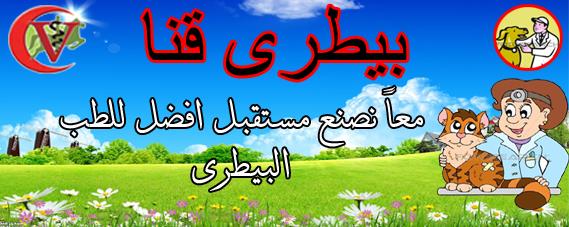Coccidiosis
2 مشترك
صفحة 1 من اصل 1
 Coccidiosis
Coccidiosis
Life Cycle and Types of Coccidia

Coccidiosis causes a thickening of the intestines, which make them feel like a sausage. There may be light-colored spots on the surface of the gut, and inside the gut, hemorrhages and streaks. If you want to confirm a diagnosis, you can send scrapings of the gut lining to a state diagnostic lab. The USDA’s Animal and Plant Health Inspection Service’s Web site lists diagnostic labs.
The type and location of lesions in the gut indicates the species of Eimeria.
Coccidiosis Management
Drugs
Drugs are used for two different purposes:
Drugs are used to prevent or treat illness. Sulfa drugs and amprolium treat coccidiosis.
Knowing how coccidia develop helps to understand and control the disease. Coccidiosis is caused in poultry by a one-celled parasite of the genus Eimeria. The life cycle of Eimeria takes about four to seven days to complete. It begins when active “oocysts” are picked up by the bird and swallowed. An “oocyst” is a capsule with a thick wall protecting the parasites. They “sporulate” or become infective if moisture, temperature, and oxygen become conducive to growth. After a bird eats the oocysts, coccidia imbed in the intestinal lining and multiply several times, damaging tissue.
A coccidial infection differs from bacterial and viral infections because coccidia are “self-limiting” and usually stop multiplying before killing the bird.
Coccidia are parasites, so they get their nutrients from the chicken host. The multiplications eventually stop, usually before causing death of the bird. The bird sheds the parasite in its droppings. These new oocysts can infect other birds. See the box “Coccidial Multiplication” for further details on coccidia’s complex life cycle.
Coccidical Multiplication
Coccidia are very prolific parasites. A single sporulated oocyst can have a big impact when eaten by a chicken. Each oocyst has four sporocysts in it, and each sporocyst has two sporozoites in it. The digestive tract releases the eight sporozoites from the oocyst, and they move into the cell lining of the digestive tract. Inside the cell, the parasite divides and invades more cells. There may be several generations of asexual multiplication; however, this stage is self-limiting and eventually stops. Finally, a sexual stage occurs in which male and female organisms unite and form new oocysts that are protected by a thick wall. These oocysts are shed in the feces. See Coccidia Life Cycle Diagram below.
Coccidia are very prolific parasites. A single sporulated oocyst can have a big impact when eaten by a chicken. Each oocyst has four sporocysts in it, and each sporocyst has two sporozoites in it. The digestive tract releases the eight sporozoites from the oocyst, and they move into the cell lining of the digestive tract. Inside the cell, the parasite divides and invades more cells. There may be several generations of asexual multiplication; however, this stage is self-limiting and eventually stops. Finally, a sexual stage occurs in which male and female organisms unite and form new oocysts that are protected by a thick wall. These oocysts are shed in the feces. See Coccidia Life Cycle Diagram below.
Coccidiosis is usually a disease of young birds, but birds can be infected at any time if never before exposed. Coccidia populations take time to build to dangerous levels, therefore outbreaks usually occur when birds are between 3 and 8 weeks of age. Coccidiosis goes hand-in-hand with gut diseases, because it damages the gut and allows bacteria to enter and cause secondary infections. Coccidia are “species-specific” – coccidia that affect chickens do not affect other livestock, and vice versa (see Species-Specific Parasites box).
| Species-Specific Parasites Almost all livestock are affected by different types of coccidia. Each type of coccidia infects only one species of livestock – each is “species-specific.” There are seven different Eimeria that infect chickens, but only three cause most of the trouble in the U.S.: Eimeria tenella, Eimeria maxima, and Eimeria acervulina. Immunity to one type does not provide immunity for other types. Turkeys, ducks, geese, and other types of poultry are all infected by different types of coccidia. | |
| Chicken coccidia species: Eimeria acervulina Eimeria maxima Eimeria tenella Eimeria necatrix Eimeria mitis Eimeria brunetti Eimeria praecox | Turkey coccidia species: Eimeria adenoeides Eimeria meleagrimitis Eimeria gallopavonis Eimeria dispersa |
Typical life cycle of coccidia in birds

Coccidiosis causes a thickening of the intestines, which make them feel like a sausage. There may be light-colored spots on the surface of the gut, and inside the gut, hemorrhages and streaks. If you want to confirm a diagnosis, you can send scrapings of the gut lining to a state diagnostic lab. The USDA’s Animal and Plant Health Inspection Service’s Web site lists diagnostic labs.
|
|
The type and location of lesions in the gut indicates the species of Eimeria.
- Eimeria acervulina affects the upper part of the small intestine. You may see small red spots and white bands on it.
- Eimeria maxima affects the entire small intestine. The intestines look watery, and in later stages have blood and mucus. The intestine may look thickened and ballooned with red pinpoint lesions.
- Eimeria tenella affects the blind sacs (ceca) of the gut. They may be filled with blood and pus and turn into a solid core.
Coccidiosis Management
Drugs
Drugs are used for two different purposes:
- To prevent illness
- To treat illness
Although a producer may depend on management for coccidiosis control, a drug such as amprolium is useful for rescue treatment in the case of an outbreak. There is no need to destroy infected birds; they can be treated. In large houses, it is necessary to routinely use drugs or vaccines because of the high density of birds.
Drugs are used to prevent or treat illness. Sulfa drugs and amprolium treat coccidiosis.
- Sulfa drugs: An exciting discovery in the 1930s was that sulfa drugs would prevent coccidiosis – the first drugs shown to do so. Sulfa drugs also have some antibacterial action. However, a relatively large amount of sulfa was needed (10-20 percent of the diet) and could be tolerated by the bird for only a short time, since it caused rickets. (Reid, 1990) Sulfa drugs had to be used intermittently (e.g., three days on and three days off). Nowadays, comparatively small amounts of sulfamonaides, such as sulfaquinoxaline, are used. They work only against Eimeria acervulina and Eimeria maxima, not against Eimeria tenella. Sulfamonaides are used to treat coccidiosis.
- Amprolium: Amprolium is an anticoccidial drug. It has also been used for many years and needs no withdrawal time to guard against residue in the meat. It is given in the drinking water and interferes with metabolism of the vitamin thiamin (vitamin B1) in coccidia. Amprolium treats both intestinal and cecal coccidia.
- Quinolones: Quinolones are “coccidiostats” that arrest the coccidia in an early stage of development. An example is decoquinate ([ندعوك للتسجيل في المنتدى أو التعريف بنفسك لمعاينة هذا الرابط]
 ). The drugs are used for prevention.
). The drugs are used for prevention. - Ionophores: Ionophores are anticoccidials commonly used in the large-scale industry. They alter the function of the cell membrane and rupture the parasite. Ionophores also have antibacterial action and help prevent secondary gut diseases. Ionophores are not synthetic drugs; they are produced by fermentation and include monensin (Coban
 ) and salinomycin ([ندعوك للتسجيل في المنتدى أو التعريف بنفسك لمعاينة هذا الرابط]
) and salinomycin ([ندعوك للتسجيل في المنتدى أو التعريف بنفسك لمعاينة هذا الرابط] ). However, some ionophores are now completely ineffective against coccidia because of resistance the coccidia have developed. They are used for prevention
). However, some ionophores are now completely ineffective against coccidia because of resistance the coccidia have developed. They are used for prevention

wessam- مراقبه عامه على القسم الأدبى

- عدد المساهمات : 1289
تاريخ التسجيل : 22/09/2009
العمر : 35
 رد: Coccidiosis
رد: Coccidiosis
thank u dr wessam

cafu- مراقب عام على القسم الأدبى

- عدد المساهمات : 1530
تاريخ التسجيل : 30/09/2009
العمر : 39
صفحة 1 من اصل 1
صلاحيات هذا المنتدى:
لاتستطيع الرد على المواضيع في هذا المنتدى




